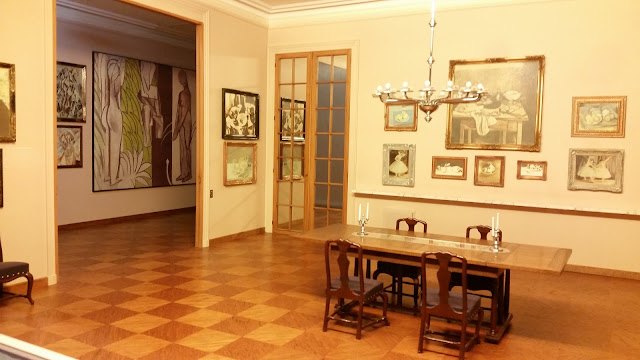Following on from my last post, which talked about seeing the contents of Andre Breton's studio: the Orangerie, at the edge of the Jardins des Tuileries, houses Monet's giant Nympheas paintings on the upper level, and on the lower level the collection of Paul Guillame. Guillaume was an art dealer who owned many works by Modigliani, Soutine, Matisse, Braque, and Picasso. But what I found really interesting during my last visit was a tiny, dolls' house-sized mock-up of some of the rooms in his apartment:
This was on the Avenue Foch, one of the poshest streets in Paris (it's a wide boulevard that runs west from the Arc de Triomphe). As you can see, if you sat down to eat in the dining room, you could look up and see paintings by Degas, Cezanne, Matisse, and Picasso.
And in the living room:
Lots of Picasso and Modigliani, plus some gorgeous furniture.
If you could select 10 paintings to hang on the walls of your living room or dining room, what would they be?
This was on the Avenue Foch, one of the poshest streets in Paris (it's a wide boulevard that runs west from the Arc de Triomphe). As you can see, if you sat down to eat in the dining room, you could look up and see paintings by Degas, Cezanne, Matisse, and Picasso.
And in the living room:
Lots of Picasso and Modigliani, plus some gorgeous furniture.
If you could select 10 paintings to hang on the walls of your living room or dining room, what would they be?

